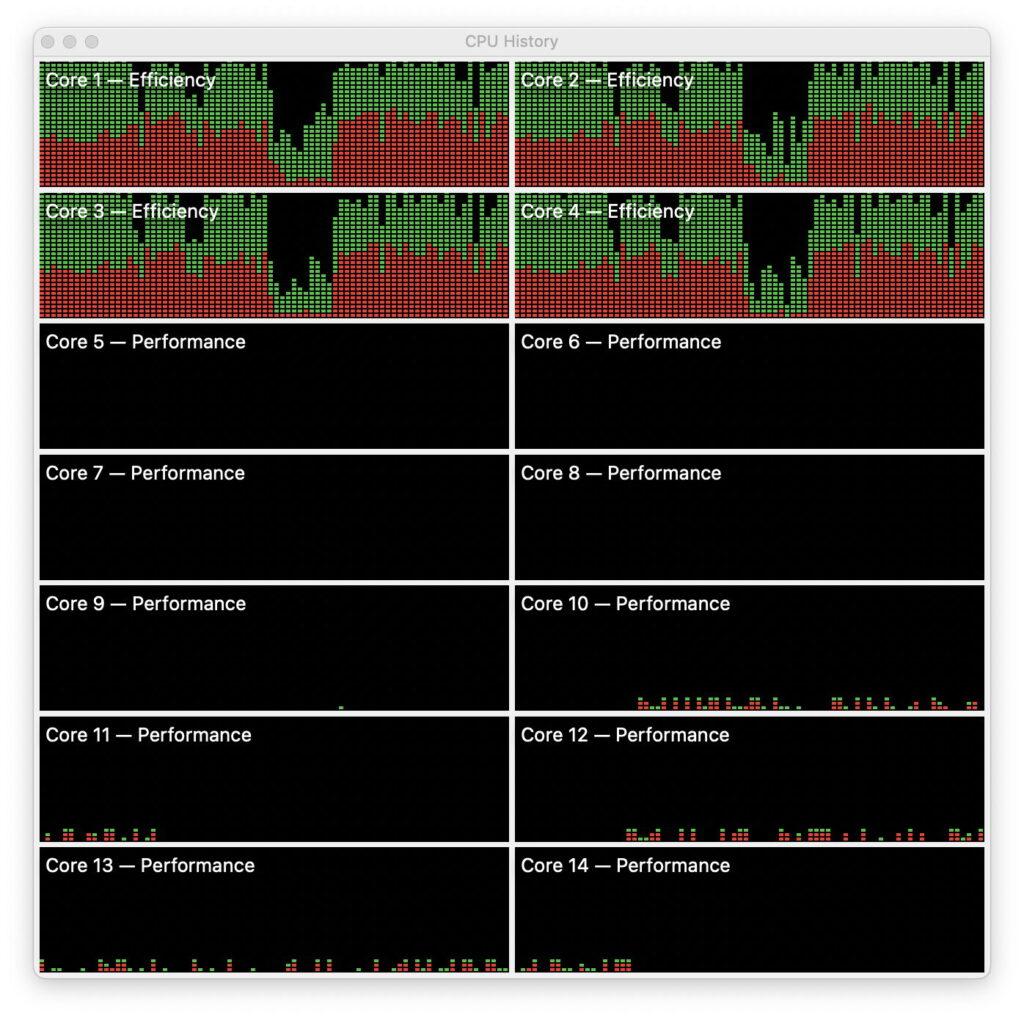Last Week on My Mac: Health & Efficiency

macOS Sequoia has had its fair share of problems, particularly with networking, and by all accounts its bundled firewall still doesn’t play nice with third-party software firewalls. But most worrying are those whose Macs find Sequoia overwhelming, recent models that should take the upgrade in their stride, but apparently don’t.
Typically, from moments after logging in, these Macs remain incessantly busy with what we expect to be brief background tasks. Several hours later, Activity Monitor still shows long periods of frenetic activity on Apple silicon Efficiency (E) cores. These appear to keep building endless Spotlight indexes and rummaging through images with photoanalysisd. Surely something must be seriously amiss in Sequoia.
When you start up an Apple silicon Mac in Sequoia 15.1, it might well appear so. There’s a long procession working through background services such as Spotlight index maintainers (mdsync, mds, mds_stores, mdwrite and lots of mdworker_ processes), Time Machine (backupd), security (XProtectRemediator, lsd, syspolicyd), and others like CGPDFService, spotlightknowledged and photoanalysisd that might look vaguely familiar.
If this procession does come to an end before the user’s patience, CPU time for some of those is amazing. Here mdwrite ran for almost ten minutes, mds for nearly five, and that’s after a normal startup, long after the last update to 15.1. How can this be right? To understand why there’s probably nothing wrong, we should consider what Activity Monitor isn’t telling us, what those E cores are up to, and why this can be normal behaviour.
E cores and % CPU
In an Apple silicon Mac, its E cores are intended to run background threads as efficiently as possible, and that often means at low clock speeds (frequencies). In an M1 Mac, that could be as slow as 600 MHz, and even in an M4 at a mere 1,020 MHz. Those are less than a quarter of the maximum frequency of the P cores, and sip power at just a few milliwatts. Unfortunately, as I’ve explained in detail, % CPU and the CPU History window in Activity Monitor take no account of core frequency. What they portray as 100% could be anywhere between the minimum and maximum, making for a huge spread of core throughput.
Frequency of both E and P cores varies greatly as they’re running different threads, as controlled by macOS. In an M4 chip, P cores have 19 set frequency steps, and even E cores have seven. What might appear in the CPU History chart to be a steady 100% load on all four E cores is probably varying widely with core frequency, with much of it running slowly to eke out power.
There’s a little irony here, in that Apple silicon Macs working their E cores with background tasks may have greater visual impact than in an Intel Mac, where they will be spread more evenly across all the cores, and appear far less despite their real impact being greater.
What is being analysed and indexed?
Over the last couple of years, macOS has gained new abilities to analyse the content of images, including those embedded in PDF documents. It all started with the introduction of Live Text back in Monterey, and has blossomed since to include other types of analysis including categorising objects discovered within images.
Consider a PDF consisting of pages scanned from a book with diagrams and illustrations. macOS can now run Live Text on each page, and within each of its pictures, then add its text and graphics content to its Spotlight indexes. You may already have noticed that searching for words that commonly appear in certain types of image like screenshots returns many hits where that text is embedded in a menu or dialog within that screenshot. Performing text recognition and image analysis on those thousands of pages takes time, particularly when it’s mostly being run efficiently, in the background on E cores.
Other background features have also changed their behaviour. For example, XProtect Remediator scans have become less leisurely and prone to omission unless your Mac is left running but inactive for significant periods. It’s now common for scans to be run shortly after the first Time Machine backup is made, five or ten minutes after starting up, rather than waiting a few hours for an appropriate moment. These now take the opportunity to get their work done sooner, running in the background on the E cores, which is, after all, what they are designed to do.
Efficient workers
Apple’s M-series chips don’t come cheap. We pay for the P cores that run our apps fast and keep them responsive so we don’t have to wait as we so often did in the past. We also pay for the E cores that beaver away in the background to ensure that when we search for photos of Aunt Sue we don’t have to sort through duds of Uncle Dave. Like all the best workers, those E cores get on with their jobs unobtrusively, work anti-social hours without complaint, and don’t crave power. So please don’t kill them, as their efficiency keeps your Mac healthy and productive.
Irreverent Background Note
Health & Efficiency plays on the name of a magazine now known as H&E naturist that was popular among young adolescent males, as for many decades from the 1920s it was one of very few newsstand publications in the UK that featured photos of naked women and men. For curious schoolboys who were too short to reach its usual lofty position on the shelves, tall friends were a great asset. I also suspect that the title is itself a play on the term self-sufficiency, which has surprisingly early origins in sixteenth century English.




